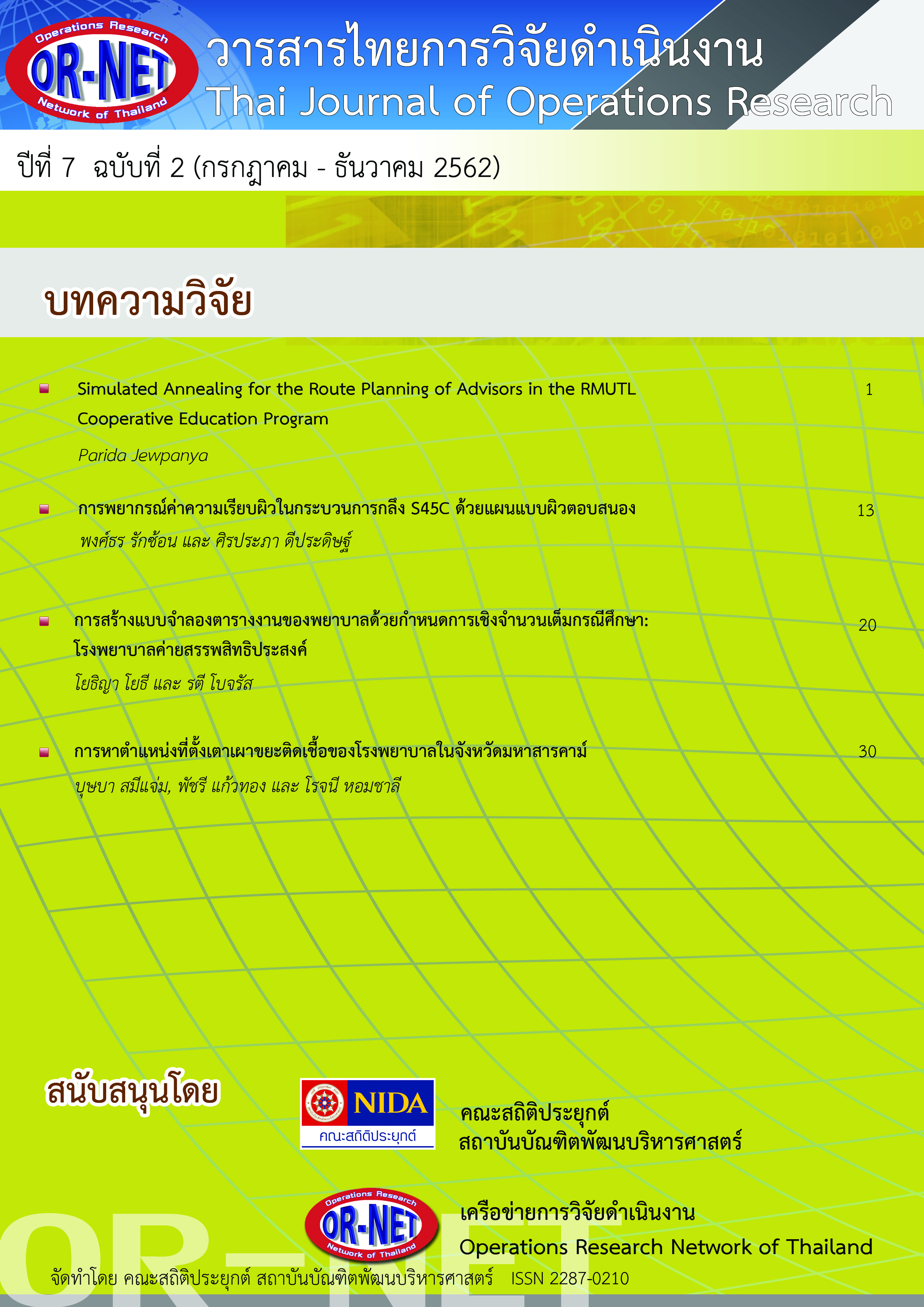Nurse scheduling model by integer linear programming (A case study : The Fort Sunpasitthiprasong hospital)
Keywords:
integer linear programming, nurse schedulingAbstract
In this research, we formulate the model of nurse scheduling by using integer linear programming (A case study: The Fort Sunpasitthiprasong hospital). The objectives of the model are to maximize the number of nurse s’day-offs subject to the hospital’s rules with Lingo and compare to the head of nurse manually. The results show an effective scheduling because it satisfied all of the hospital’s rules with the maximum of nurse s’day-offs.
References
Jenal R, Ismail WR, Yeun LC, Oughaline A, “A cyclical nurse schedule using Goal Programming,” ITB Journal of Science, Vol. 43, pp. 151-164, 2011.
Burke, E.K., de Causmaecker, P., van den Berghe, G. & van Landeghem, H., “The State of The Art of Nurse Scheduling”, Journal of Scheduling, 7, pp. 441-499, 2004.
Cheang, B., Li, H., Lim, A. & Rodrigues, B., “Nurse Scheduling Problems – A Bibliographic Survey”, European Journal of Operational Research, 151, pp. 447-460, 2003.
Ernst, A.T., Jiang, H., Krishnamoorthy, M. & Sier, D., “Staff Scheduling And Scheduling: A Review of Applications, Methods and Models”, European Journal of Operational Research, 153(1), pp. 3-27, 2004.
M. Widyastiti, A. Aman and T. Bakhtiar, “Nurses Scheduling by Considering the Qualification using Integer Linear Programming,” TELKOMNIKA. Vol. 14, pp. 933–940, 2016.
W. Agyei, W. O.D and E.A. Andaam, “Modeling Nurse Scheduling Problem Using 0-1 Goal Programming: A Case Study Of Tafo Government Hospital, Kumasi-Ghana,” International Journal of Scientific and Technology Research, Vol. 4, pp. 5-10, 2015.




